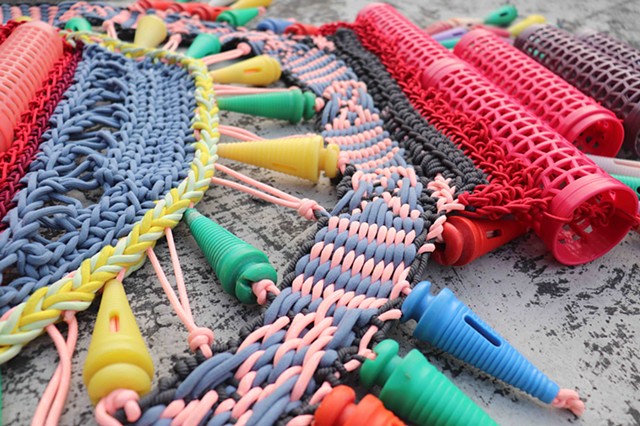Environment Sustainability
This necklace sculpture is woven from colourful ropes and repurposed plastic yarn spools—once essential tools in the textile industry. The history of necklaces runs parallel to the history of textiles, both evolving hand-in-hand over centuries.
Yarn spools—tubular, rigid structures used to wind thread— come in various shapes and sizes depending on their role in the manufacturing process. This sculpture incorporates repurposed plastic spools from yarn winding machines, as well as smaller bobbins once used in weaving shuttles—both essential tools in textile production. While fabric rarely survives the passage of time, tools like these offer a window into past textile practices. By reimagining the spools and bobbins as beads, the artist highlights the evolution of the industry and the cultural narratives embedded in everyday materials. The work becomes a meeting point of tradition and innovation, encouraging reflection on how we assign value to the objects around us.
The inspiration for this sculpture emerged during the artist's field research in Ichinomiya, Japan, where abandoned plastic spools in a derelict textile factory sparked the concept. These discarded remnants—once vital parts of a thriving industry—were collected and later paired with spools from Tainan, Taiwan. Woven into patterns evoking flowing water and swimming fish, they symbolize life, movement, and continuity.
Each spool, once a silent cog in a larger system, now tells a renewed story—connecting nature, history, culture, and human experience.
